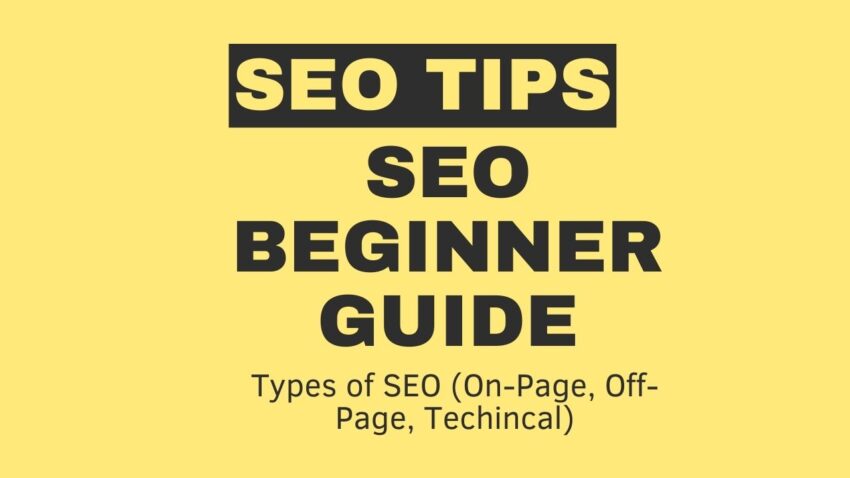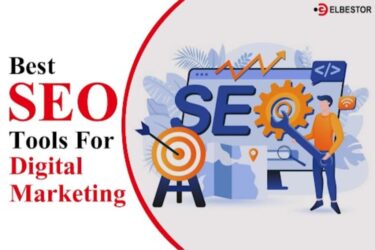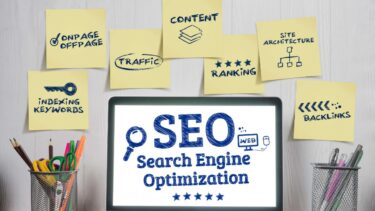Did you know that almost all of the things we do online begin with using a search engine? So, if you want people who might be interested in your business to find you, you need to use something called search engine optimization (SEO).
Just having a website isn’t enough to get people to visit it. Sometimes, it can be hard to figure out why you’re not getting as many visitors as you’d like.
That’s why you might want to work on improving your SEO, or even try doing it yourself. Knowing about the different kinds of SEO can help you pick the right services to make your website more noticeable. It can also give you the knowledge to fix some of these problems on your own, and then let a specialist handle the rest.
In this comprehensive SEO guide, we will take a look at the Types of SEO that are most important to make a stand on Google Search Engine also will discuss other related SEO terms.

Before moving ahead let’s go back and discuss what SEO is all about!
SEO stands for Search Engine Optimization which is the process of growing the website organically on search engines (like Google, and Bing) to increase the website’s visibility, ranking, and position over time.
In other words, SEO refers to improving your site’s visibility in Google search results for relevant keywords or search phrases. SEO helps in generating site traffic naturally.
Contents
Let’s get into the ocean of SEO and classify the Types of SEO:
There are three most important types of SEO are:
1. On-Page SEO
2. Off-Page SEO
3. Technical SEO
Start with a brief explanation for each type:
On-Page SEO
On-page SEO is the strategy most businesses use for their websites. In simple terms, on-page SEO means making changes to your website that improve how it works.
On-site SEO is all about making changes directly on your website to make it more appealing to search engines. This could involve tweaking the content or the HTML code of your site. The goal is to get your website to rank higher on search engine results pages, which can help draw more relevant visitors to your site. On the other hand, off-site SEO is a different strategy that focuses on external factors, such as getting other websites to link back to yours or getting your content shared on social media. Both strategies are important for improving your website’s visibility online.
Keyword optimization is a popular method used in on-page SEO. It’s all about figuring out what words people are using when they search for things online, and then using those words in strategic places on your website. This could be in the title of your page, the meta description, or the headings. You can also create content specifically around these keywords. This helps search engines understand what your site is about and can make your site appear more relevant to people’s searches.
Another strategy used in on-page SEO is making your website’s URLs better. This means organizing and designing the URLs of your website in a way that makes sense. By including relevant keywords in your URLs, you can help search engines understand what your website is about, which can help your website rank higher in search results. This not only makes it easier for users to navigate your site, but it also makes it easier to build links to your site.
These are just a couple of the most common methods businesses use to improve their on-page SEO. Other techniques include creating links within your website and improving meta descriptions. The main thing to keep in mind is that on-page SEO is all about making changes to your website to make it more attractive to search engines.
Off-Page SEO
Off-page SEO is all about the actions you take outside of your website to improve its performance. These are things that happen elsewhere on the internet but can still impact how well your site does.
Essentially, off-page SEO is about enhancing your website’s reputation and visibility by using strategies that don’t involve changing anything on the website itself. This could involve getting other reputable websites to link back to yours, promoting your website on social media platforms, or using other online marketing techniques.
The objective is to improve a website’s credibility, reputation, and relevance from the perspective of search engines. Achieving this can lead to better rankings on search engine results pages and an increase in organic (non-paid) traffic to the website. It’s about making the website more visible and trustworthy online.
Social media sharing is a significant factor in off-page SEO. When you post links to your website on your social media platforms, the way your followers engage with these links is beyond your control. This interaction, however, is an external factor that can enhance your website’s performance. Essentially, the more your content is shared and interacted with on social media, the better your site may rank in search engine results.
Many off-page SEO elements can impact your website’s ranking. These include reviews, backlinks, competitor research and analysis, and internet advertisements. These elements help direct traffic from various sources to your website. Unlike on-page SEO strategies that you can implement directly on your site, these are external factors that you don’t have direct control over. However, they play a crucial role in influencing your website’s visibility and ranking on search engine results.
Technical SEO
Technical SEO refers to the process of fine-tuning your website’s backend to ensure it functions smoothly and boosts your site’s ranking. It involves adjustments on the backend of your website that make it easier for search engines to crawl and index your site, which in turn enhances its ranking on search engine results.
Key tasks in technical SEO include improving your website’s loading speed, correctly configuring robot.txt files, and setting up redirects properly. Essentially, it’s all about making your website more efficient and user-friendly, which search engines reward with higher rankings.
The main objective of technical SEO is to enhance the accessibility and user-friendliness of a website, both for search engines and for visitors. A crucial element of this is the speed at which your webpage loads. Users visiting your site expect it to load swiftly and may become impatient if it takes too long. Therefore, to achieve optimal results and keep your visitors satisfied, it’s essential to ensure your webpage loads promptly.
Google PageSpeed Insights is a tool you can use to check the loading speed of your website. If you find any issues using this tool, it’s up to you to make the necessary adjustments to your website. To make your site more mobile-friendly, you can implement a responsive design.
This means your website will automatically adjust to fit the screen of the device a user is using, whether it’s a smartphone, tablet, or desktop. This not only enhances the user’s experience but also makes your site more accessible.
Site structure is like the blueprint of a building. It’s about how you organize and arrange the different parts of your website. When your site has a clear structure, it becomes easier for both people and search engines to find their way around. Imagine a well-organized library where books are neatly categorized – that’s what a good site structure does for your website. It ensures that visitors can quickly locate the information they need, leading to a better user experience.
There are a couple of significant technical aspects of Search Engine Optimization (SEO) that can greatly affect how your website performs. If you want your business to rank well in search results, it’s crucial to fine-tune the technical side of your website. This means making sure your site is optimized for search engines to understand and index it effectively.
Additional SEOs
Besides the SEO services, there are multiple other SEO strategies that your business can benefit from.
1. Local SEO: If you’re aiming to attract more local customers to your business, Local SEO can be a great help. This approach to SEO allows you to concentrate on strategies that specifically target customers in your local area. It’s an effective way to increase footfall and bring more customers through your door.
2. E-commerce SEO: E-commerce SEO is all about enhancing the visibility of online businesses and helping them connect more effectively with their customers. This strategy is geared towards generating valuable leads and increasing conversions for your retail business. If you’re selling products on Amazon, incorporating Amazon SEO services into your e-commerce SEO strategy can be a beneficial addition.
3. Enterprise SEO: Enterprise SEO is a strategy that enhances your online visibility and allows you to compete for highly sought-after keywords. It’s particularly useful when you have many competitors targeting the same keywords as your business. This approach helps you stand out in the crowded digital marketplace.
Conclusion
There are many different SEO strategies you can use. Each one can help you improve your online campaign and attract more potential customers to your business. Just like in a Piano where each keyword plays a unique part, each type of SEO has a specific role in making your online presence more visible. By using a variety of SEO strategies, you can achieve success in the competitive online world.




